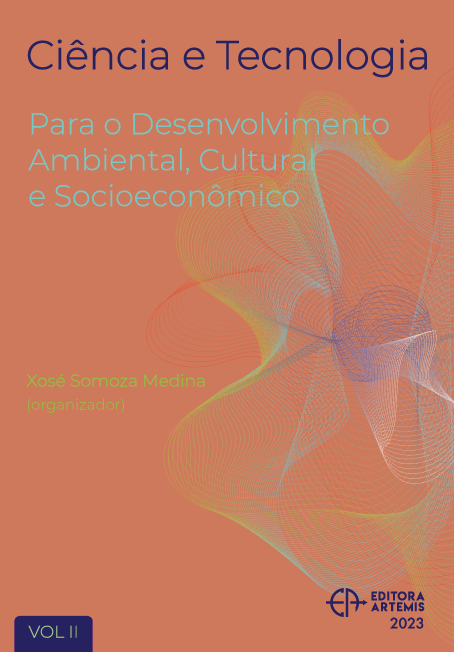
BIORESTORATION OF AN AGRICULTURAL SOIL IMPACTED BY WASTE MOTOR OIL
Soil impacted by 50,000 ppm of hydrocarbon mixtures such as waste motor oil (WMO) exceeds the maximum allowable concentration of 4,400 ppm established by the Mexican environmental standard NOM-138-SEMARNAT-2003. Soil impacted by 50,000 ppm of WMO, it causes loss of fertility. The objectives of this work were: a) biostimulation of the soil impacted by 50,000 ppm WMO, with detergent and mineral solution b) phytoremediation by sowing Phaseolus vulgaris and Zea mays with Bacillus licheniformis and Rhizobium etli to reduce the concentration of WMO to a value lower than the maximum allowed by NOM-138-SEMARNAT-2003. This agricultural soil contaminated by WMO was biostimulated and phytoremediated, then the initial and final concentration of WMO was determined by Soxhlet experimental data were analyzed with ANOVA/Tukey (P<0.05). The results indicated that biostimulation of soil impacted by 50,000 ppm WMO decreased to 30, 378 ppm in 30 days; indicating that mineral solution induced aerobic heterotrophic microorganisms to mineralize the WMO, increase in the microbial density oxidizing the WMO with 13.7 X 106 CFU/g dry soil, a statistically different numerical value compared to the population that oxidized the WMO with 13.2 X 105 CFU/g dry soil of the soil without biostimulation or negative control. Subsequently, phytoremediation with P. vulgaris and Z. mays with B. licheniformis and R. etli at physiological maturity of both plants, reduced the concentration of 30,378 ppm of WMO remaining after biostimulation to 700 ppm and 900 ppm of WMO respectively; both values were lower than the maximum allowed by NOM-138-SEMARNAT-2003. It is concluded that biostimulation of soil impacted by WMO followed by phytoremediation is a sustainable strategy for the removal it to a concentration found in soil not impacted by hydrocarbons, due this soil can be reused in agricultural production.
BIORESTORATION OF AN AGRICULTURAL SOIL IMPACTED BY WASTE MOTOR OIL
-
DOI: 10.37572/EdArt_2702237673
-
Palavras-chave: Soil. Hydrocarbons.Plants. Endophytic bacteria. Mineralization.
-
Keywords: soil, hydrocarbons, plants, endophytic bacteria, mineralization.
-
Abstract:
Soil impacted by 50,000 ppm of hydrocarbon mixtures such as waste motor oil (WMO) exceeds the maximum allowable concentration of 4,400 ppm established by the Mexican environmental standard NOM-138-SEMARNAT-2003. Soil impacted by 50,000 ppm of WMO, it causes loss of fertility. The objectives of this work were: a) biostimulation of the soil impacted by 50,000 ppm WMO, with detergent and mineral solution b) phytoremediation by sowing Phaseolus vulgaris and Zea mays with Bacillus licheniformis and Rhizobium etli to reduce the concentration of WMO to a value lower than the maximum allowed by NOM-138-SEMARNAT-2003. This agricultural soil contaminated by WMO was biostimulated and phytoremediated, then the initial and final concentration of WMO was determined by Soxhlet experimental data were analyzed with ANOVA/Tukey (P<0.05). The results indicated that biostimulation of soil impacted by 50,000 ppm WMO decreased to 30, 378 ppm in 30 days; indicating that mineral solution induced aerobic heterotrophic microorganisms to mineralize the WMO, increase in the microbial density oxidizing the WMO with 13.7 X 106 CFU/g dry soil, a statistically different numerical value compared to the population that oxidized the WMO with 13.2 X 105 CFU/g dry soil of the soil without biostimulation or negative control. Subsequently, phytoremediation with P. vulgaris and Z. mays with B. licheniformis and R. etli at physiological maturity of both plants, reduced the concentration of 30,378 ppm of WMO remaining after biostimulation to 700 ppm and 900 ppm of WMO respectively; both values were lower than the maximum allowed by NOM-138-SEMARNAT-2003. It is concluded that biostimulation of soil impacted by WMO followed by phytoremediation is a sustainable strategy for the removal it to a concentration found in soil not impacted by hydrocarbons, due this soil can be reused in agricultural production.
-
Número de páginas: 15
- Juan Manuel Sánchez-Yañez
- Monserrat Torres-Olaya
- Juan Luis Ignacio-De la Cruz
- Gabriel Gallegos-Morales

